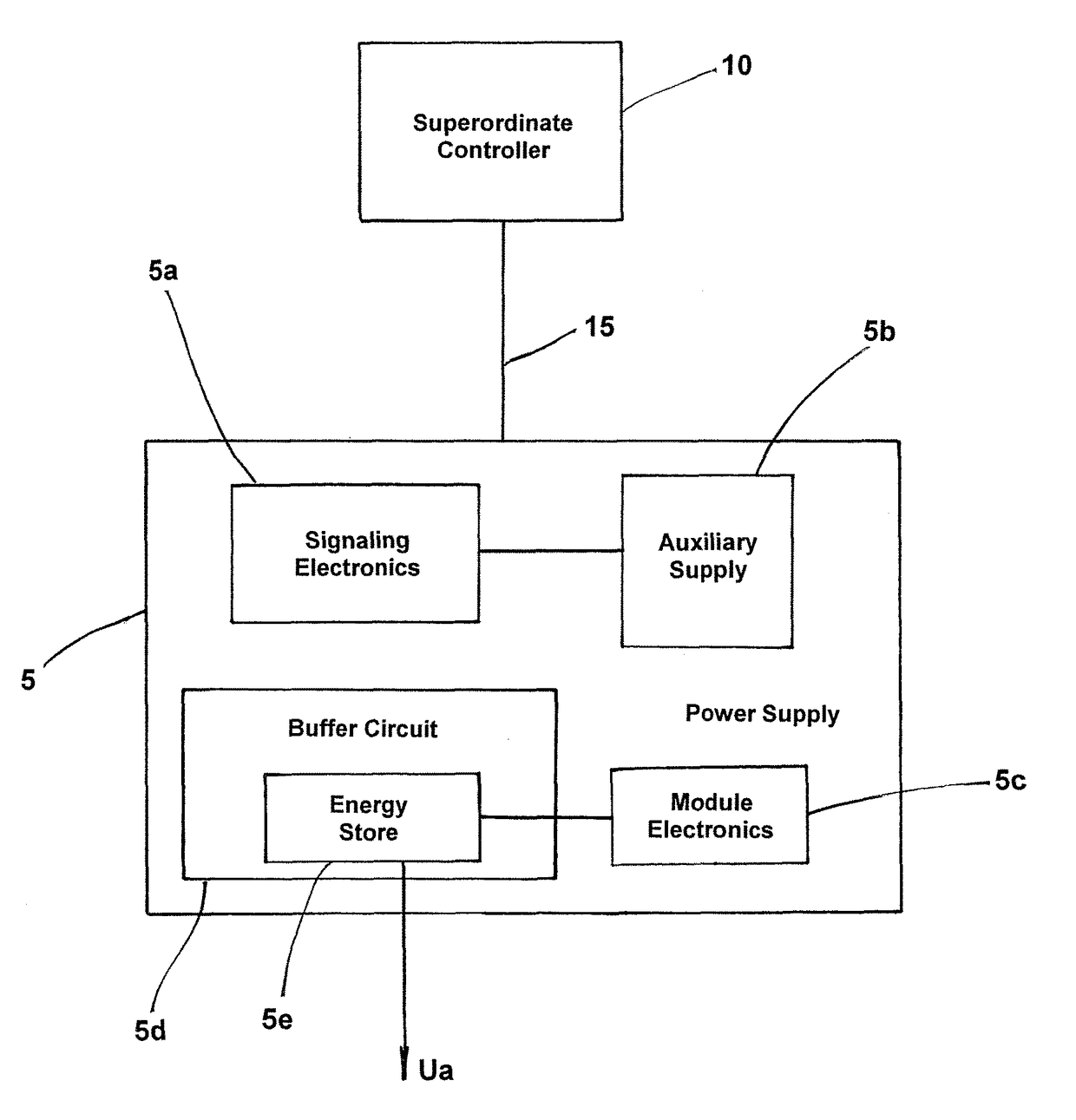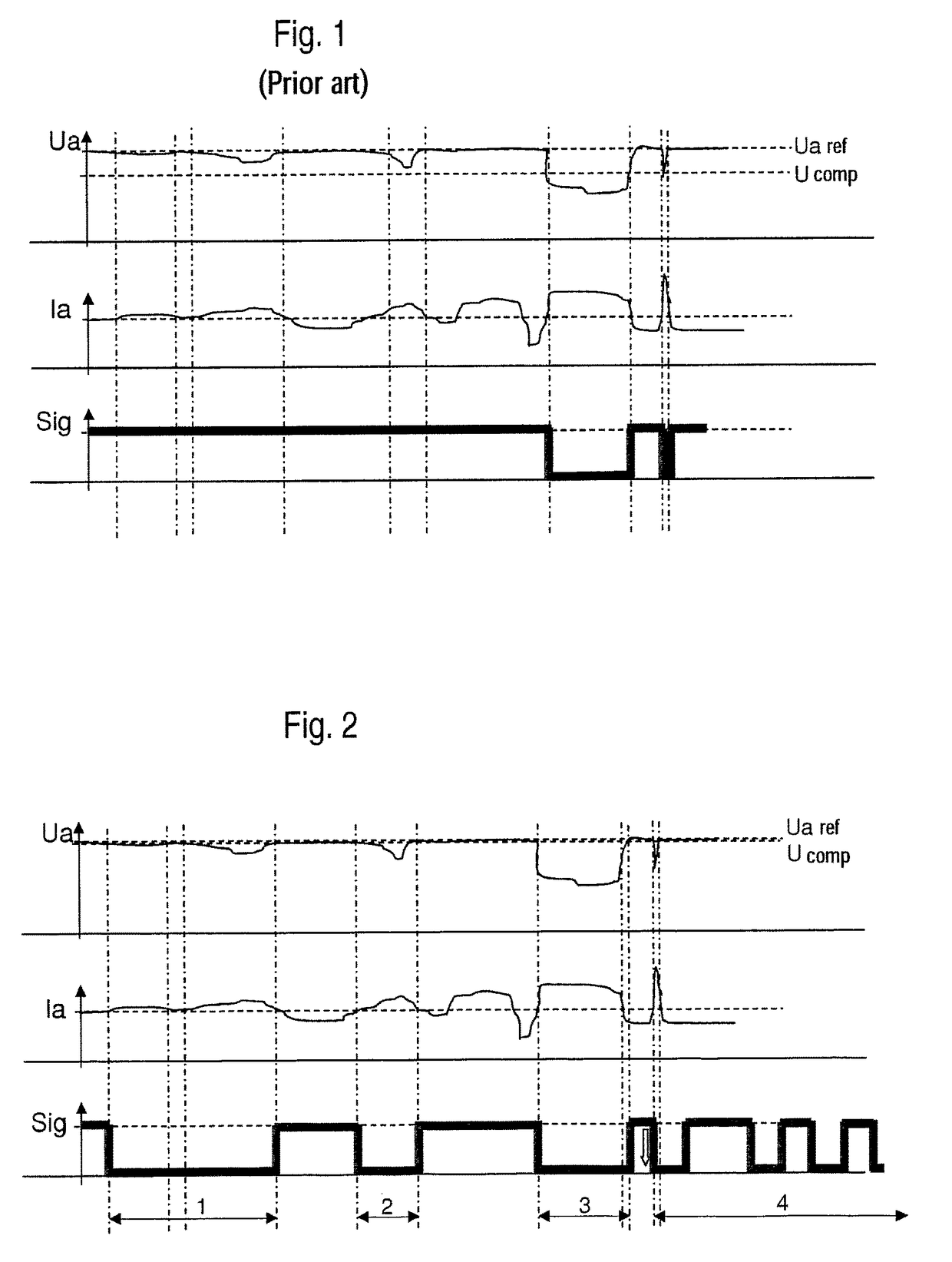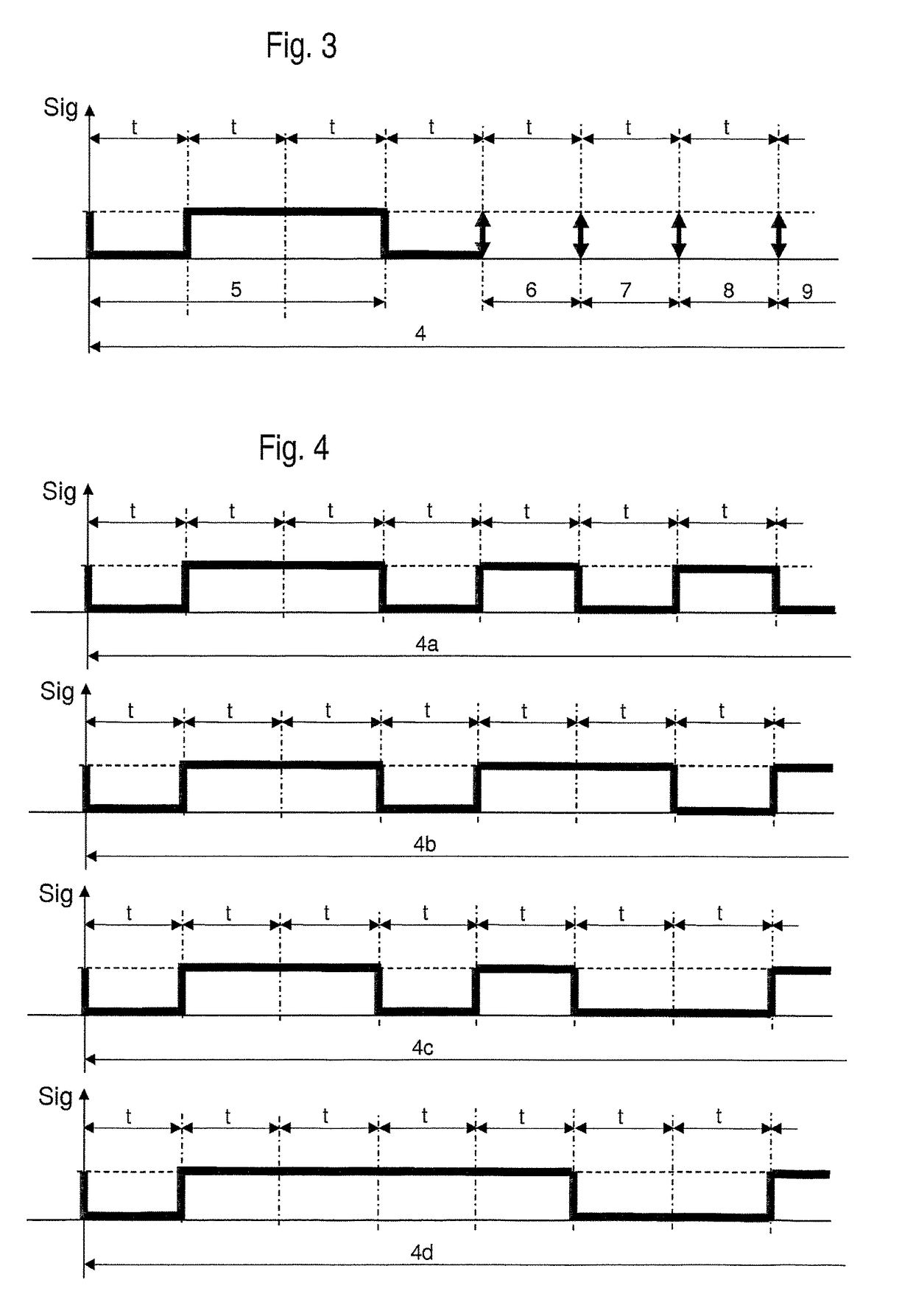[0009]This and other objects and advantages are achieved in accordance with the invention by providing an arrangement and method in which a “power-good” signal is continuously transmitted during faultless operation by a power supply via a signal line to the superordinate controller and, if a fault occurs, an indicating signal is transmitted by the power supply to the superordinate controller via the signal line as a switching sequence of high and low signals such that each change of the switching sequence occurs only after a period of time that is longer than an expected greatest query interval and such that each signal of the switching sequence that does not correspond to the power-good signal is shorter than a specified signal duration for indicating a total failure of the power supply. On the one hand, this provides the option of assigning a specific fault a characteristic switching sequence of high / low signals and, on the other hand, a total failure of the power supply is reliably detected, as soon as a switching sequence changes into a permanent low signal. The superordinate controller thus receives more information than was previously the case. In the normal state, the power-good signal is transmitted, which is inevitably only transmitted for fault-free power supply, fault-free load and fault-free signal line. As soon as a fault occurs, the power-good signal will be interrupted by a switching sequence of high-low signals. Compared to a normal serial transmission, the difference is that the signal changes of the switching sequence occur at time intervals that are longer than the time segments between the queries of the superordinate controller. Only in this way is it possible to use an input stage designed for querying static signals as a digital input for transmission of additional information. In addition, a robust relay able to be employed reliably in the field of automation technology is able to be used to create the indicating signal, because by the continuous transmission of a power-good signal in normal operation no ongoing switching changes occur, which would have a negative effect on the service life of the relay.
[0011]It is of advantage for a longest cycle time to be expected of the superordinate controller comprising a stored program controller to be specified as the greatest query interval to be expected. The use of an SPC as a superordinate controller thus allows a simple definition of the minimum period of time between the signal changes of the switching sequence provided.
[0016]In this case, it is advantageous for a priority level to be specified for the power supply for each type of fault and, with faults that occur simultaneously, for the transmission of the corresponding switching sequences to be arranged in order of the assigned priority level. In this way, the indication of fault types that require the power supply to be switched off is not blocked by the simultaneous occurrence of non-critical faults.
[0018]In another embodiment, in accordance with a repetition specification, a first switching sequence is transmitted a number of times consecutively to the superordinate controller and this repeated transmission is aborted and a second switching sequence is transmitted if a new fault, to which the second switching sequence is assigned, arises. Basically, the repetition of a switching sequence serves to improve the recognition of this switching sequence. As soon as a new fault arises, especially with a higher priority, the repetition is aborted to transmit the new and possibly more important message to the superordinate controller in good time.
[0019]To avoid false alarm messages, it is advantageous for a tolerance period to be specified for the power supply, when the tolerance period starts to elapse on occurrence of a fault and when for a continuing fault after the tolerance period has elapsed, the corresponding switching sequence is transmitted to the superordinate controller. In this way, it is insured that exceeding or falling below a threshold value for a very brief period is not indicated immediately as a fault.
[0021]In yet a further embodiment of the method, the power supply is switched off for specific faults and the power supply, after a new activation, transmits a corresponding switching sequence to the superordinate controller. This insures that, if it is necessary to switch the power supply off immediately, the cause of the fault is indicated to the superordinate controller. This can be the case with a sudden overheating of the power supply, where a temperature warning message can no longer be transmitted before the power supply is switched off. Fault tracing is made easier by the retrospective fault message.
 Login to View More
Login to View More  Login to View More
Login to View More 


